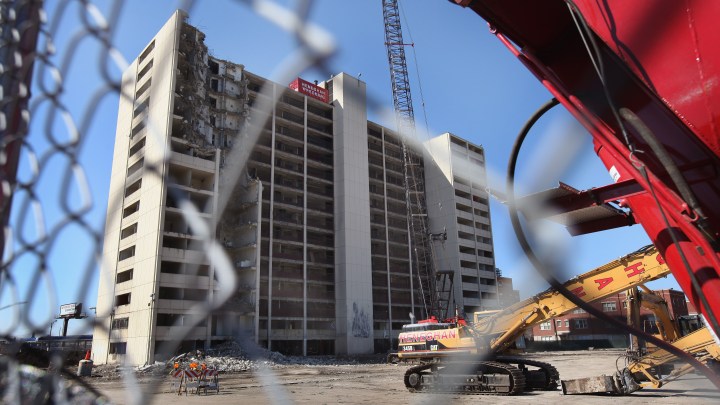
Is racist housing policy the real villain in “Candyman”?

The 2021 film “Candyman” has grossed more than $76 million worldwide and has an 84% rating on Rotten Tomatoes. Critics raved about its mostly Black cast, twist ending and dedication to social commentary. This new entry in the “Candyman” series focuses on Anthony McCoy, a rising artist in Chicago, who rediscovers the myth behind the Candyman that sets off gruesome murders in the area. But within this film, there’s a whole conversation about gentrification, racism and housing.
Brentin Mock, a writer for Bloomberg CityLab, writes that Candyman represents Chicago’s Cabrini-Green Homes housing project; he is what bad and racist housing policy initially created and what gentrification tries to erase. Mock writes, “Candyman, the audience learns, is the spirit of the racial violence sparked by slum removal, urban renewal, urban transformation, public safety and all of the other euphemisms used to describe the displacement and death of Black bodies and properties.”
“Marketplace” host Kai Ryssdal spoke with Mock about the deeper meanings that permeate the horror film. The following is an edited transcript of their conversation.
Kai Ryssdal: I think maybe the first thing we need to do is set the scene, literally the scene, and tell people what Cabrini-Green was in Chicago.
Brentin Mock: Cabrini-Green was one of the largest public-housing projects in the United States. It is situated just beyond downtown Gold Coast, Chicago. I say it “is” because there still is a remnant of it that exists. At its peak, it housed nearly 15,000 people. And it was a site of much controversy throughout Chicago history and U.S. history in terms of it being this public-housing experiment. All of those high-rises I mentioned were razed, taken down, and were replaced with what you see there today, which is a bunch of luxury tower apartments, high-end retail stores, a movie theater. So, that’s the story of Cabrini-Green in a nutshell.
Ryssdal: And it gets us to your piece about this film, and it is a film you write that has a lot of layers, right? There’s racism, urban renewal, there’s housing policy and police brutality. You, though, say that gentrification and, you know, no spoiler alerts — even though I haven’t seen this film, there are some people who will — you say the gentrification is the actual villain in this picture.
Mock: It sets the stage for the actual villain. I mean, the villain is a slasher, whose name is Candyman; he has a hook for a hand. He’s the ghost of a former Cabrini-Green public-housing resident. And so what this modern “Candyman” version does is it brings you back to that location now that most of that public housing has been cleared out. It’s kind of haunted with the ghost of the people who used to live there, who’ve been replaced by luxury housing and retail. It’s definitely referenced as part of the terror, if you will, of not only, you know, why the current location is being haunted by Cabrini-Green, but also the people who live there currently.
Ryssdal: It’s important to point out that this isn’t a film about Cabrini-Green, specifically, right? It’s that broader thing that happens to Black and minority neighborhoods all over this country, in every part of the economy, where they get cut off and left to die, in a way.
Mock: I mean, the location in sight for most of the movie is in the, again, the Cabrini-Green footprint. But it does serve as a symbol for the racial violence of what has happened to African Americans in cities across the United States, where their homes and businesses were taken down, either due to government neglect or because the government wanted to put a highway up, and it just so happened that the public-housing projects were in the way. And you know, we don’t want to romanticize public-housing projects like Cabrini-Green too much. It definitely had its problems. But this movie, it definitely summons the spirit of, you know, what I call not a haunted house, but a haunted housing policy, in which Black people have been packed into these public-housing projects. And then, you know, disappeared and erased from there when the city and the federal government believed that the public-housing projects had outlived its purpose.
There’s a lot happening in the world. Through it all, Marketplace is here for you.
You rely on Marketplace to break down the world’s events and tell you how it affects you in a fact-based, approachable way. We rely on your financial support to keep making that possible.
Your donation today powers the independent journalism that you rely on. For just $5/month, you can help sustain Marketplace so we can keep reporting on the things that matter to you.











